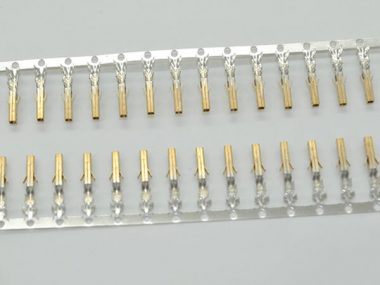Electroplating of connector contacts can improve durability and signal transmission reliability. Gold, copper, zinc, palladium, nickel, silver, and alloys are all materials used for connector contact plating. While the copper contacts are favored for their excellent electrical conductivity, they are prone to oxidation. The use of gold plating or other rust-resistant metals increases the corrosion resistance of the connector contacts, and the thicker the gold plating, the more durable, high temperature and corrosion resistant the connector contacts are.
Selective electroplating technology reduces the cost of electroplating precious metals. Expensive plating materials such as gold, platinum or palladium are only applied to a part of connector contacts, and precise selective plating methods can even apply different thicknesses of plating to different parts of the connector contacts.
Normally, copper and nickel finishes are typically plated all over, using techniques such as controlled depth plating, stripe plating, spot plating, front and back plating, or contour plating. Precious metals such as gold or palladium are selectively plated only on functional areas of the connector.
Connector contacts are manufactured from a wide variety of materials, including copper alloys, stainless steel, aluminum nickel alloy, chrome nickel alloy and plastics, selective plating techniques help connectors achieve high performance while minimizing cost.





